
Business photo created by tirachardz – www.freepik.com
Online shopping is becoming the de facto mode of buying and selling—worldwide retail eCommerce sales is projected to reach US$4.9 trillion in 2021.
Accelerated by global pandemics like Covid-19, many here in Singapore have switched to buying online. This resulted in the exploding growth of eCommerce stalwarts like Amazon, Alibaba, Ten Cent, JD.com, and qoo10, as well as platforms and payment apps like Google, PayPal, Salesforce, Rakuten, and more.
As more Singaporean consumer and B2B businesses switch to eCommerce channels, competition for attention is predicted to grow by leaps and bounds.
While Search Marketing (both Search Engine Optimization or SEO and Search Engine Marketing or SEM) remains a vital strategy in eCommerce, it is often social media which triggers your prospect’s initial awareness and interest in your brand and product.
In this article, you will learn how social media marketing works to drive online sales, what its advantages are, and how you can use it to grow your online sales.
How Social Media Marketing Drives Online Sales
To understand the role of social media marketing in online sales, you need to consider your social media marketing funnel.
Here’s an example of how the funnel may look like, complete with the different stages of your customer journey and content types through-the-funnel.
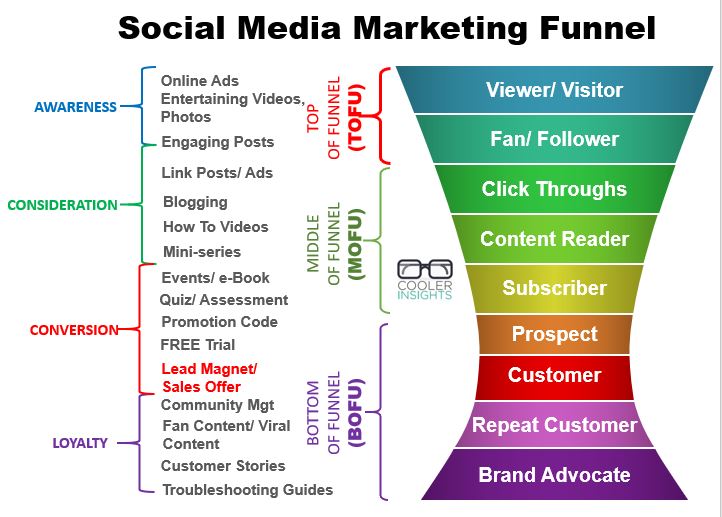
There are various ways to use social media platforms like Facebook, Instagram, TikTok, YouTube, LinkedIn, or Pinterest to propel online sales through the different stages of the marketing funnel.
#1 Build Brand Awareness and Interest
Trying to launch a new brand in a crowded consumer market? The first thing you need to do is to build your brand.
Thankfully, this is where social media channels shine, given the vast number of people logging into Facebook, Twitter, TikTok, Instagram, YouTube or other channels every day.
#2 Foster Brand Consideration
Beyond catching the attention of your audience, you can use social platforms to educate and engage them. Doing so helps to foster brand consideration and trust—a critical strategy when you’re relatively new in the marketplace.
#3 Generate Leads
These days, social media platforms like Facebook and LinkedIn offer lead generation ads which allows you to capture names, emails, phone numbers and other data directly on the platform. You can also use instant messaging apps and chatbots to nurture leads down your funnel—many of these work on platforms like Facebook or Instagram.
#4 Drive Online Sales
Right now, tools on Facebook, Instagram and Pinterest provide options for you to extend your eCommerce shopfront to these channels. You may also use direct messaging apps (and chatbots) to help convert leads to customers. Admittedly, however, most eCommerce transactions occur outside social media platforms.
#5 Deepen Customer Loyalty
This is where social media shines. By building a sense of belonging and camaraderie, Facebook and LinkedIn Groups can be used to strengthen customer loyalty. The same also applies to your YouTube channel, if you’re able to consistently provide valuable content to your fandom.
Six Benefits of Social Media for eCommerce

Beyond helping to lead your prospective customers through the different stages of customer acquisition, social media also possesses the following advantages:
#1 Increase brand discovery
Social networks can easily introduce novel brands to fresh audiences by virtue of their global reach. This can help to nudge them towards searching for your brand online.
#2 Strengthen brand recognition
Through repeat exposure to your target audiences, social media channels allows you to improve brand recall.
#3 Build long-term relationship
By consistently sharing relevant content and interacting with your community online, you’re able to build long-term relationships with your customers.
#4 Surgical precision in targeting audiences
Most social networks like Facebook, LinkedIn, Instagram, TikTok, Twitter, and YouTube provide highly targeted advertising options. This ensures that you reach the right audiences.
#5 Relatively lower cost per result
Comparatively speaking, advertising on social media is cheaper than splashing on TV, cinema, outdoor or newspaper ads. Social networks also offer superior analytics and trackability.
#6 Tap Word-of-Mouth effects
Perhaps the greatest value of all is the ability for social networks to trigger virality and Word-Of-Mouth (WOM) effects amongst your target audiences.
Now that you’re convinced of the power of social media marketing and how it helps to drive online shoppers, let us look at the steps you need to take.
Study Your eCommerce Customer
![]()
First and foremost, you’ll need to understand who your potential customer is.
Paint a picture of who she or he may be, based on their demographic, psychographic, and behavioural attributes. Where possible, try to conduct a survey of your potential customer so that you can mine invaluable insights on what their pain points are. A good place to start would be your existing customer base.
You can also use various social media research tools to find out what topics, influencers and keywords to focus on. Here are some of my favourites:
- BuzzSumo: To find out what the most shared social media content pieces are
- Ubersuggest: To discover the keyword volume of popular topics on Google
- Answer The Public: To find question and answer combinations that addresses specific customer queries
- Quora: To investigate what concerns potential customers may have
(Read more about building a customer profile in this article.)
Trace Your Customer Buying Journey
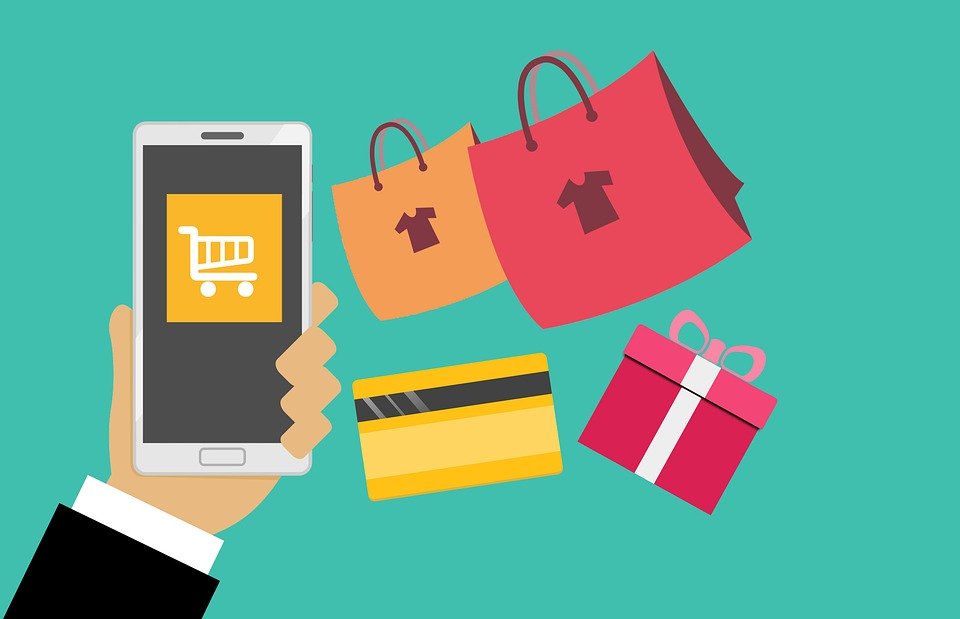
According to the Rule of 7, your customer is more likely to purchase from you after multiple touch-points with your brand (between 6 to 8). These interactions may take place both online and offline.
A good way to deliver the right content to your customer is to consider his or her buying journey and publish useful and relevant content that meets their informational needs.
This can be mapped to the different stages of their purchase journey:
- Need Recognition
- Research Options
- Evaluate Brands
- Purchase
- Post Purchase
By meeting these informational needs with your social media content, you’re more likely to win their trust and capture their attention as they consider where they should make their online purchases.

Track Your Marketing Funnel Metrics (and Plug Leaks)
Use Facebook Insights, Facebook Ads Manager, Instagram Insights, LinkedIn Analytics, Google Analytics or other online analytics tools to track your audience’s progression through the different stages of your marketing funnel.
You can plug in your numbers for each stage back to your funnel and determine your engagement and conversion rates at each stage as shown below.
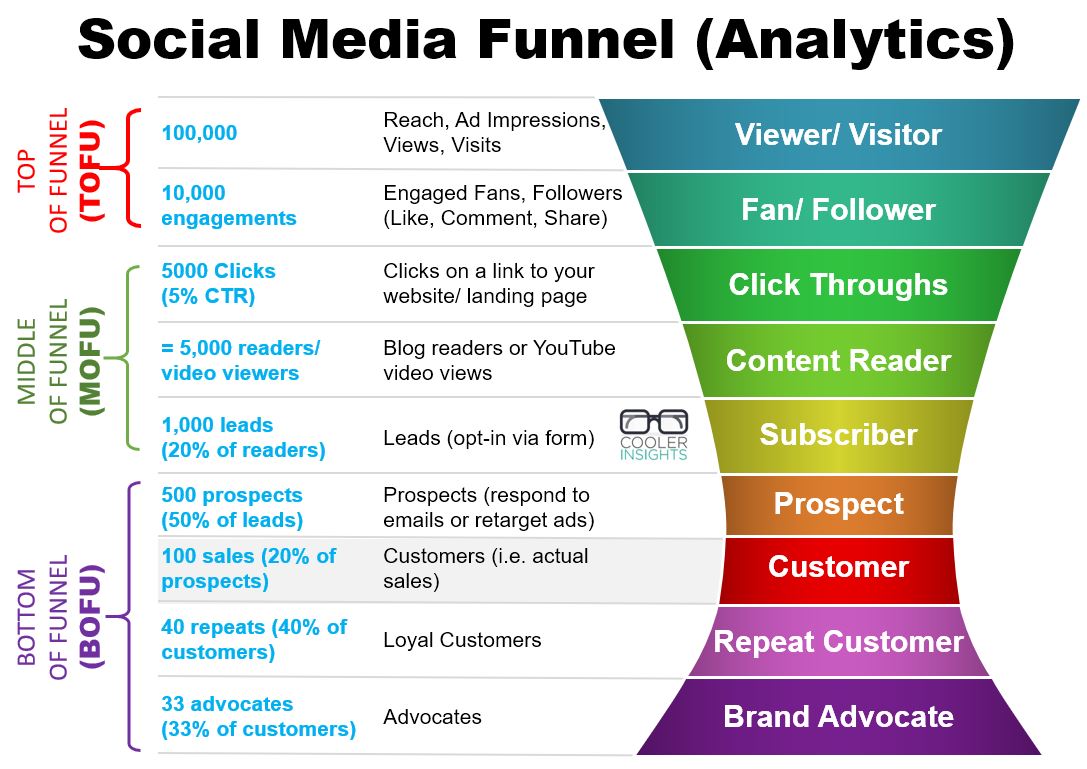
Both Facebook and Google provides funnel tracking tools that enable you to track the numbers at each stage of their interactions with you.
You can set up a funnel on Facebook using the different audiences — Cold, Warm and Hot audiences. Or use the Goal Setting function in Google Analytics to track your customer’s progress on your eCommerce website’s different pages.
With both tools, you can determine where your traffic leaks occur, and find ways to improve them. These often involve changing your content, or reviewing your offers to make it easier for visitors to take action at each stage.
Spy on Your Competitors
With the wide range of mostly free spying tools available (read Neil Patel’s article for a comprehensive list), there really isn’t any reason for you not to know what your online competitors are doing.
To see what ads your competitors are placing on Facebook, simply visit Facebook’s Ad Library, key in your competitor’s branded page into the search engine, and see what ads they’re currently running.
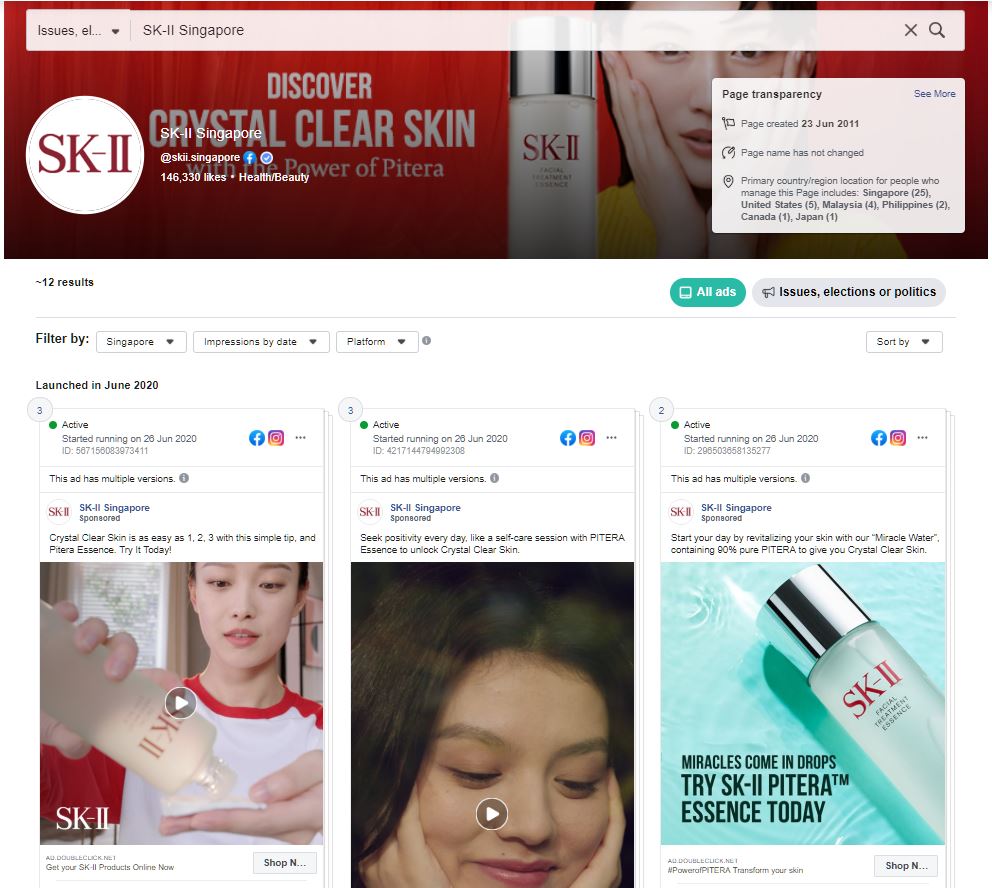
To spy on the ads which your competitor may be running on multiple social media platforms, consider using BigSpy—a recent tool with a limited free version that allows you to research their social media ads on Twitter, Instagram, Facebook, Google, Pinterest, and Yahoo!
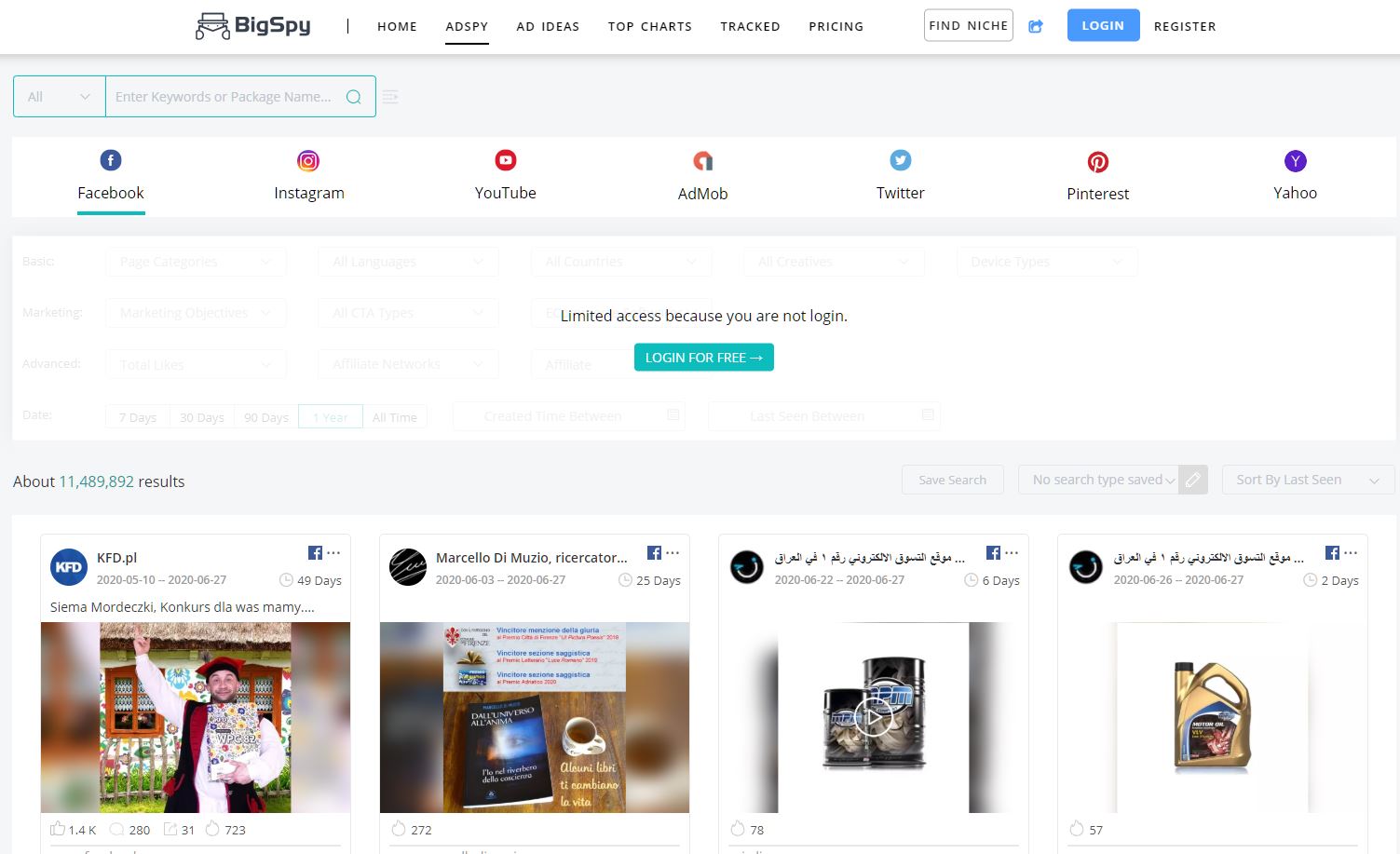
Produce Videos that Address Pain Points and Show Product Features
Often, the chief reason why online shops are not converting on social media is due to the poor quality of their content.
To sell to a Facebook, Instagram, or YouTube audience, you need to think of your ad like a short-version of a TV infomercial:
- Catch the attention of your audience in the first 3 to 10 seconds. Use a dramatic footage.
- Show the pain points or problems that your customer currently faces
- Explain visually and demonstrate how your product or service solves that problem
- Provide proof points (customer testimonials, research findings, statistics) to reduce perceived risk
- Have a Call To Action (CTA) which seeks your customer’s participation
Oh, and you should entertain your audiences too! Like this example below featuring a company selling socks (yes, you read it correctly) on YouTube.
Grow Your Online Community

If content is king, then community is queen.
To ensure that you have a large enough pool of potential customers online, it pays dividends for you to nurture and grow your social media fanbase.
Begin with these 25 ways to grow your social media community, ensuring that you not only produce and share content on a regular basis, but interact with your fanbase and respond to their requests.
You should also work with the right influencers for your product categories and brand—these social media stalwarts can help you reach new audiences and amplify your campaigns.
Run Retargeting Social Media Ads
Also known as remarketing ads, retargeting is the strategy of showing an ad to a visitors to your website when he or she logs onto social media.
According to various sources, retargeting ads have yielded consistently better results as they focus on targeting warm traffic. These are folks who have already expressed some interest in your brand as they’ve either visited your website, watched your Facebook video, or filled-in a lead form.
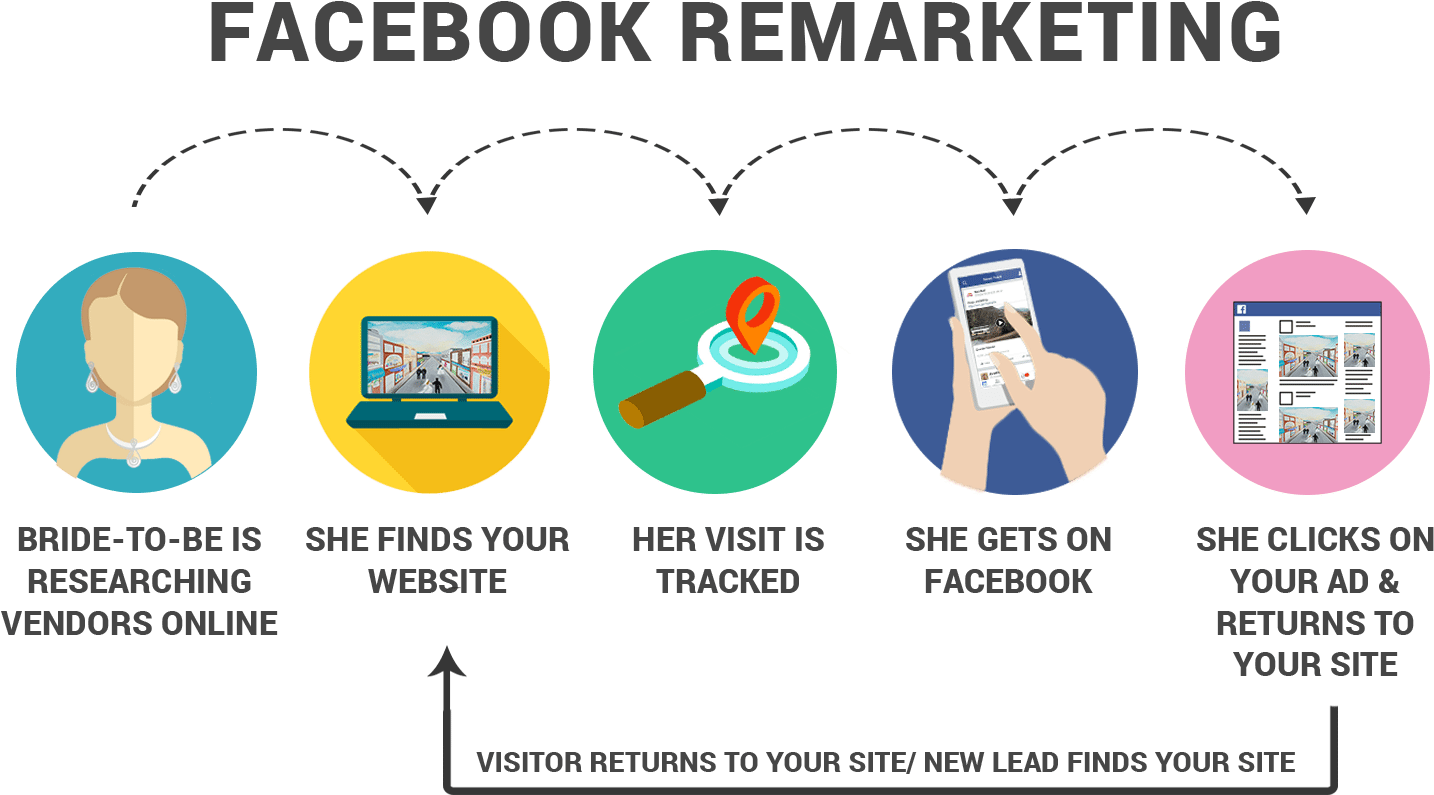
On social media platforms like Facebook, LinkedIn, Instagram, Twitter and YouTube, you can set-up pixels or tags to track visitors to your website and show them a certain type of ad.
Most also allow you to upload a database of your customers as a Custom Audience which you can target when they’re logged onto social media.
Use Pre-sell Content
Featured in an episode of Perpetual Traffic podcast by Digital Marketer, pre-sell content is a piece of content which your prospect sees before you ask them to buy your product.
A pre-sell piece of content is often on a landing page, and may help to reduce the barriers to buying which your prospect may have. Often, such content is presented AFTER your prospect clicked on a social media ad on Facebook, YouTube, Twitter, or other channels.
They often contain testimonials, social proof, product features and benefits, as well as demonstration videos to show how your product works.
Here are some best practices for a good pre-sell page courtesy of optinmonster.
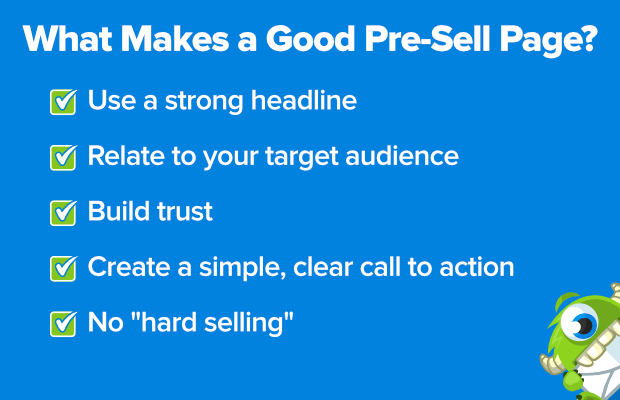
Courtesy of optinmonster
Explore New Social Media Shopping Tools
What if you wish to sell your products and services directly on your social media platforms?
Well, there are several tools which you can use, depending on which social media platform you choose. Let us look briefly at some of the most common ones:
- Live-streaming (Facebook Live, Instagram Live, YouTube Live): Selling live on social media using the Facebook Live function has caught on quite a bit in Singapore. Pages like Lian Huat Seafood, Tekka Online Market, Misshopper Boutique, and others have tapped on this growing trend of conducting live auctions. Watch this video featuring Facebook queen Mari Smith for tips on how to do so.
- Facebook Marketplace: This is a free tool available on Facebook which allows buyers and sellers to directly transact with each other. It is fairly easy to set-up, and can be useful for small businesses or solopreneurs seeking to move products quickly. Like live selling, transactions are often conducted through direct messaging between buyer and seller.

- Facebook Catalogue: This is a function on Facebook which allows you to list down and categorise your different products into SKUs. By doing so, you can then run Facebook Dynamic Ads, create a Facebook Page Shop, or a Collection Ad.
- Instagram Shopping: These are available in certain markets, and allows you to list your products or services on Instagram together with an image, cost, description, and a link to your website where the product is being sold.
- Facebook Shops: Announced by Mark Zuckerberg himself, this is an upcoming new feature that allows your customers to shop entirely on Facebook or Instagram without leaving these platforms. It is still in the early stages, but it could be worthwhile for you to take a look when the feature is ready.
Ensure Seamless Customer Experience
Last, but certainly not least, you need to consider your customer’s entire online buying experience—from seeing your ads and posts on social media, visiting your eCommerce website (whether it is your own platform or an online shopfront in Lazada, Shopee or Qoo10), ordering your product or service, to receiving it on their doorstep.
Often, the failure of eCommerce lies in situations where companies over-promise and under-deliver.
You can read more about why customer experience is the new marketing here.
Conclusion
Selling products or services online via eCommerce is probably the way to go, given how digital savvy your future consumers will be.
Adopting these holistic practices will help you to tap on social media channels like Facebook, Instagram, YouTube, LinkedIn, Pinterest and others to improve your online sales. As a long-term channel, consider how you can attract, nurture and retain your online customers beyond splashing money on ads and pushing products.
Have you started selling online? How have you used social media channels to promote your products or services?
